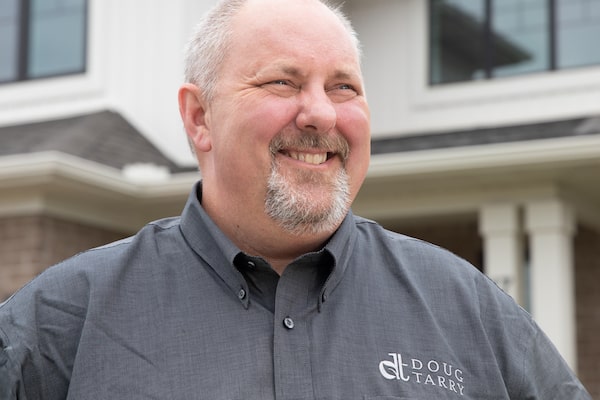
A natural gas stove offers the best control over heat and a superior cooking experience.iStockPhoto / Getty Images
If you’re looking to buy your first home or expect to move this year, you know real estate prices remain stratospheric in Canada. According to the Canadian Real Estate Association, February 2022 prices were 21 per cent higher than they were just a year ago – and they were already sky-high.
Those looking to buy or perhaps renovate need to do what they can to manage the cost of their biggest investment. That means making sure you keep your utility bills under control.
“When you heat with gas, the cost is lower,” says Doug Tarry of Doug Tarry Homes in St. Thomas, Ont., a builder of net-zero homes. In fact, according to the Canadian Gas Association, residential consumers can save between $1,000 and $3,000 a year by heating their space and water with natural gas instead of other fuel sources.
In addition, this amply available energy resource comes with a versatility that has extra appeal for many home buyers. Whether fuelling the grill or the stove top, or heating water or our homes – natural gas does it all for Canadians, around the clock.
Understanding gas
Canada is home to a world-class natural gas industry that leads the globe in responsibly produced energy. According to Fuelling Canada, the country has over 573,000 kilometres of underground infrastructure, which delivers reliable energy to more than 20 million Canadians every day.
And Canadians will be able to rely on it for years to come. This country has enough natural gas to last for about the next 230 years.
Canada also boasts world-leading manufacturers of some of the most popular home products. Take Napoleon, a maker of gas, electric and wood fireplaces, grills and outdoor living products headquartered in Barrie, Ont.
“All of the products made in Canada are above and beyond in terms of quality and safety,” explains David Shulver, vice-president of research and development at Napoleon. “Most products have double redundancy, so customers can be confident there are backups in place that guarantee safety.”

Doug Tarry in front of one of his company's net-zero homes in St. Thomas, Ont. 'When you heat with gas, the cost is lower,' Tarry says.SUPPLIED
Keeping warm
On average, in Canada, natural gas is cheaper than any other home heating source. Importantly, gas offers a warm heat while other sources can produce an overly dry heat, which can make you feel dehydrated as well as draw moisture from your skin.
At home, Shulver has a dual-fuel combination gas furnace and heat pump – this device extracts energy from the air outside to heat the house, while still being able to cool it in summer. The heat pump will turn on when electricity rates are low or when it can efficiently do its job. He says the gas furnace runs during the cold days of winter. “As the temperature gets really cold outside, heat pumps lose their ability to produce as much heat, which is when the gas furnace kicks in,” Shulver advises.
As Canadians look at energy choices, we know that cost is a top consideration. “Right now, a dual-fuel heating system is a fantastic interim approach,” says Tarry.
He often installs a furnace with a heat pump in the homes he builds – he helped design a system with HVAC company Dettson that works seamlessly with a smart ducting system. Regular ducts lose 25 to 30 per cent of their air flow from duct leakage, while a smaller, smart-duct system sheds less than 5 per cent.
Tarry also notes the most efficient homes have proper insulation and sealing. Whatever system they choose, he recommends people look to HVAC products with an Energy Star sticker.

David Shulver, vice-president of research and development at Napoleon, says the grill, fireplace and outdoor-living manufacturer sees people creating full outdoor kitchens with the gas barbecue built in. 'It adds to the resale value,' he says.Supplied
The cooking angle
If you use natural gas, it’s straightforward to hook up a gas stove, which offers the best control over heat and a superior cooking experience. As well, with gas in the house, you can run a line to your barbecue – so you’ll never run out of fuel, which can happen while cooking a big family meal.
Shulver says pellet grills have become increasingly popular, but a clean-burning gas barbecue is the best choice for anyone living in an urban area. “Your neighbours may not be that pleased with a lot of smoke billowing over into their yard,” he says.
He says Napoleon sees people creating full outdoor kitchens with the gas barbecue built right in. “It adds to the resale value,” he says, as buyers appreciate these features.
A crackling fire
Having a gas line also allows you to put in a new fireplace or convert a wood-burning fireplace to gas. The latter has a key benefit – old fireplaces lose heat. “You might not feel a draft, as hot air rises, but air is getting sucked out of the room,” Shulver says. “You could be losing a lot of energy.”
Many Canadians use their gas fireplace as a focal point for cold winter nights in, but they’re also great for heating rooms – particularly chilly basements – without having to warm the entire house. Shulver says many Canadians who live in regions with frequent power outages rely on their gas fireplaces to keep them toasty, and pipes from freezing, when the electricity goes out.
Innovations in gas fireplaces make them even more appealing today. Some are designed to push the heat away from the wall, so you can put a TV above them. Increasingly efficient fireplaces produce the look of embers with LED lights, emit less heat and use less energy.
As Canadians continue to look for reliable energy solutions, natural gas remains a smart choice for comfort, dependability and affordability.
“Gas is affordable, and the best thing we can do is use less and get the most benefit from it,” Tarry says.
Learn more why natural gas is the smart choice to fuel your home at www.fuellingcanada.ca.
Advertising feature produced by Globe Content Studio with Fuelling Canada. The Globe’s editorial department was not involved.